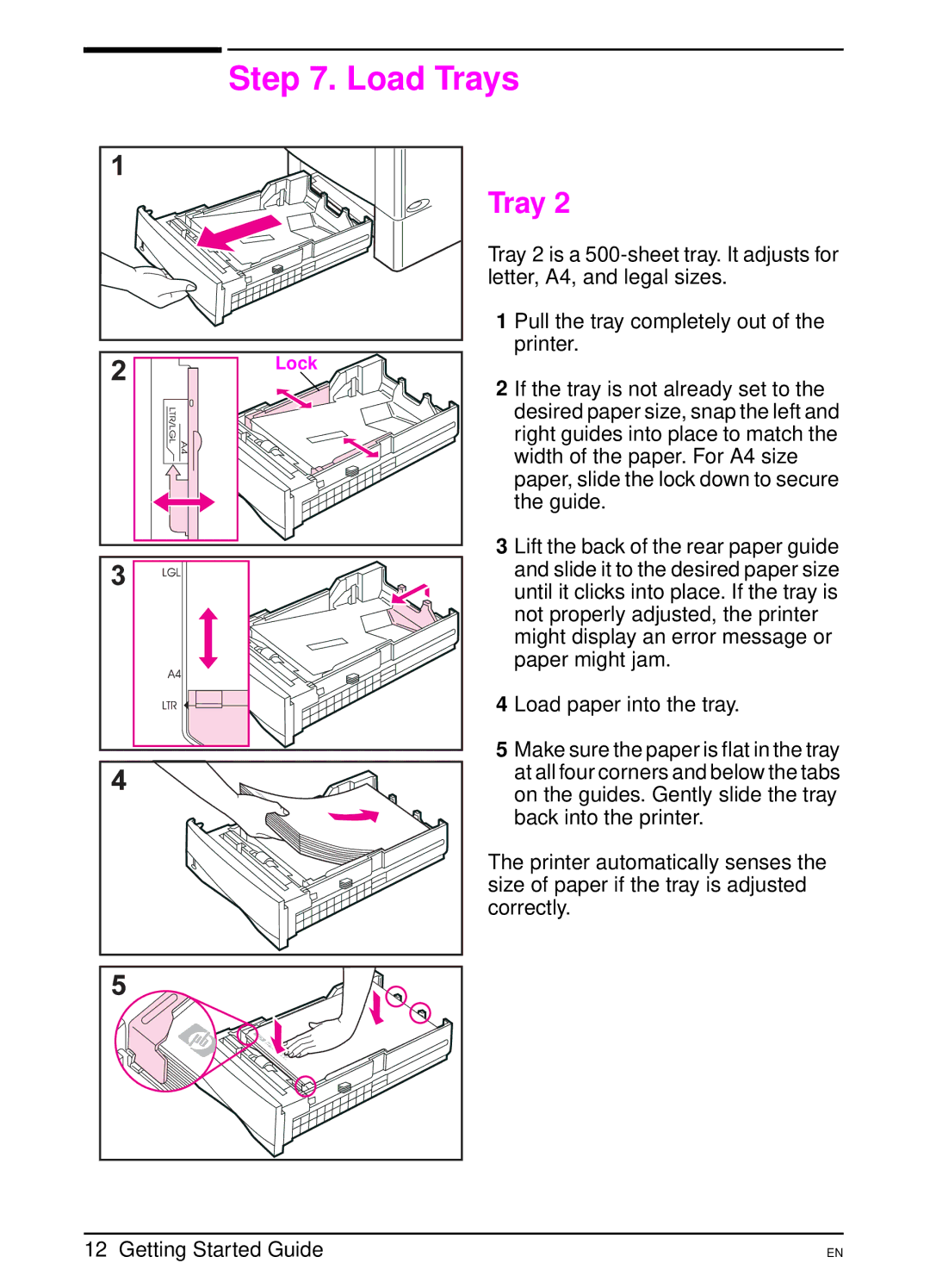4000, 4000 N specifications
The HP LaserJet 4000 series is renowned for its reliability and efficiency, making it a staple in many business environments. The HP 4000 N and 4000 model variants have been designed with advanced printing technologies to enhance productivity and deliver high-quality output.The HP 4000 N model is equipped with a robust 1200 dpi resolution, allowing for sharp text and graphics, which is essential for professional documents. It supports a print speed of up to 19 pages per minute, ensuring that even large print jobs are completed quickly. This model features a monthly duty cycle of up to 65,000 pages, making it suitable for medium to large workgroups that demand consistent performance.
One of the defining characteristics of the HP 4000 series is its standout paper handling capability. The standard configuration includes a 250-sheet input tray, a 100-sheet output tray, and the flexibility to expand with optional additional trays. Users can add up to three 250-sheet paper trays for extended capacity, facilitating long-printing tasks without frequent interruptions. The printer also supports various media sizes, ranging from letter to legal and envelopes, catering to diverse office printing needs.
Connectivity is another strength of the HP 4000 N model. It comes standard with a parallel port and a fast Ethernet interface, ensuring seamless integration into networked environments. This allows multiple users to share the printer without sacrificing print speed or quality. The built-in PCL and PostScript compatibility offer versatility when dealing with different print jobs and are crucial for ensuring that text and graphics are rendered correctly.
In terms of consumables, the HP 4000 series utilizes high-capacity toner cartridges, which not only reduce the frequency of replacements but also contribute to lower overall printing costs. Users can expect a yield of around 10,000 pages per cartridge, optimizing productivity and minimizing downtime.
The HP 4000 N and 4000 series are also recognized for their durability and ease of maintenance. With a straightforward control panel and intuitive cartridge replacement process, users can quickly manage their printing tasks. This user-friendly design reduces the learning curve for new staff and enhances overall team productivity.
In conclusion, the HP 4000 N model stands out with its superior print quality, excellent speed, and robust paper handling capabilities. These features, combined with its connectivity options and cost-efficient consumables, make it a valuable addition to any business looking to enhance its printing infrastructure. The durability and reliability of the HP 4000 series ensure that businesses can rely on these printers for their day-to-day operational needs.

